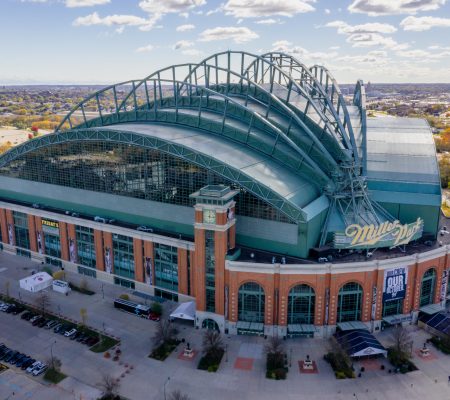2018 National League MVP Christian Yelich Sustains Season-Ending Patellar (Knee Cap) Fracture
Dr. Patrick Jost, Milwaukee Orthopaedic Group Limited
2018 National League MVP Christian Yelich sustained a season-ending injury Tuesday night in the Brewers 4-3 win over Miami. The diagnosis; patellar (knee cap) fracture. While not very common in baseball, patellar fractures (knee cap) can happen, and unfortunately for the Milwaukee Brewers, one happened to their superstar outfielder in the middle of a heated wild-card race. Only one game behind arch-rival Chicago Cubs, the Brewers could ill afford to lose their best player. Team officials have unfortunately reported that Yelich’s season is over after he fouled a ball off his right knee in the first inning.
 Board Certified Orthopedic surgeon, Patrick Jost, MD from Orthopaedic Hospital of Wisconsin notes, “patella (knee cap) fractures usually occur as a result of direct impact or a fall onto the knee and can be extremely painful due to the mechanical nature of the knee.” Certainly, a foul ball from a major leaguer qualifies as a direct impact injury.
Board Certified Orthopedic surgeon, Patrick Jost, MD from Orthopaedic Hospital of Wisconsin notes, “patella (knee cap) fractures usually occur as a result of direct impact or a fall onto the knee and can be extremely painful due to the mechanical nature of the knee.” Certainly, a foul ball from a major leaguer qualifies as a direct impact injury.
What is the Function of the Patella?
The patella, or kneecap, has to withstand stress under tension as it transfers the force of the quadriceps (thigh) muscle across the knee. This is different than the other bones of the leg that see compressive stress with weight-bearing, like the femur and the tibia. The patella also has cartilage on the backside of it, which helps it glide smoothly along a groove in the femur as the knee bends and straightens. The patella acts as a fulcrum to increase the force and strength that your leg provides, allowing your body to perform the following functions:
- Standing
- Walking
- Running
- Jumping
Baseball relies on a great deal of leg power and weight transfer in hitting. Without a healthy patella, the hitting stroke and power required to drive a baseball is impossible.
How is a Patellar Fracture Treated?
Patella fractures have a wide range in severity. Some can be fractured in many pieces and widely displaced, which require surgery to realign the cartilage perfectly, and usually, lead to long term pain even under the best surgeon’s care. Less severe cases can be treated without surgery- these are usually nondisplaced fractures, like an ice cube that cracks but stays together.
How Long Does a Patellar Fracture Take to Heal?
In most cases, these fractures require a period of 4-6 weeks of immobilization, followed by physical therapy for several months. In the best case, an athlete might get back to sports in 2-3 months, but 4-6 months to recover is much more common.
According to Jost, “Christian will most likely be treated in a very conservative manner and the Brewers will likely take a long-term approach to his recovery due to his importance to the team. Christian may be able to avoid surgery and will begin the long rehab process with physical therapy that will start almost immediately after the immobilization period. His rehab will begin with a very low-level range of motion and strengthening and progress to some light jogging around three months and will culminate in running, cutting, jumping and explosive drills after that.”
Learn more about knee services and Dr. Patrick Jost at the Orthopaedic Hospital of Wisconsin.


